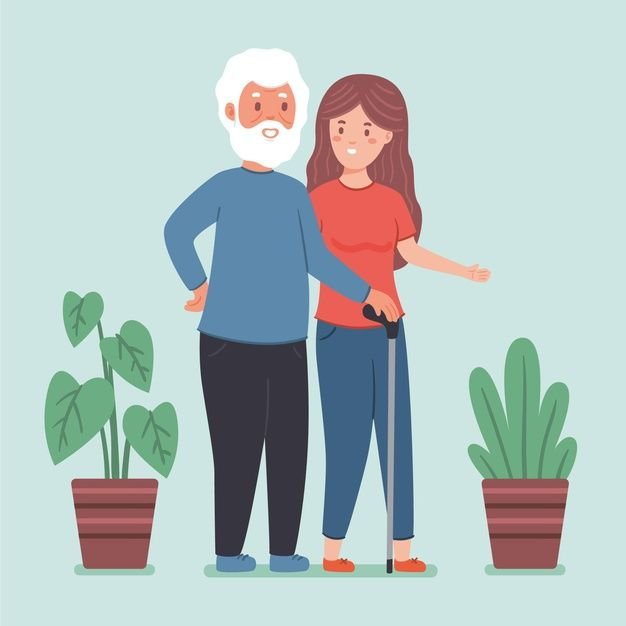
Sexuality and Ageing
Topic Overview
As individuals age, they experience various physical, psychological, and social changes that can significantly impact their motivation and social relationships and consequently their well-being (Carstensen, 2021). Whilst in professional settings the focus often lies on health related issues, there are age-related changes that are not or only indirectly related to diseases or functional limitations. However, these changes often have an equally large influence on the quality of emotional, cognitive and behavioural aspects of the quality of life and sexuality of individuals.
The following explores age-related changes in motivation and social relationships in old age, drawing insights from gerontological theories and research. By understanding these changes, you can better support older adults in maintaining a healthy and fulfilling sexuality (Scherrer, 2009)
Aims and objectives
Learning outcomes
After reading this module you should be able to…
- Understand the motivational changes in old age, including shifts in goals and priorities influenced by changes in perceived remaining time in life.
- Recognise the changes in sexual motivation in older adults, the variability in sexual desire and the importance of intimacy and new forms of sexual expression.
- Understand changes in social relationships , such as transitions in partnerships, impact of social environments, and the role of the social convoys as humans grow older.
- Appreciate the significance of intergenerational relationships in supporting older adults’ well-being and combating social isolation.
- Gain a better understanding of cohort effects and their influence on the social and cultural norms, sexual education, gender roles, and expectations of older adults.
Motivational Changes in Old Age
Particular theories of aging explain changes in behaviour by changes in motivation. Goals and motivations change throughout the lifespan and the priorities of younger people differ from those of older people. Among older persons, for example, reproduction or career advancement become less relevant and, similarly they are less likely to invest in activities or relationships that will bring them a profit in the distant future. While it is more important for younger people to have a large, diverse social network, older people place more value on close social relationships (Carstensen, Isaacowitz, & Charles, 1999).This is mainly related to the decreasing lifetime perspective.
According to the socioemotional selectivity theory (Carstensen, 1999, 2021), older adults undergo a shift in their motivational priorities. As their individual life time horizons shrink, older individuals tend to prioritise emotionally meaningful goals, such as cultivating positive relationships and enhancing emotional well-being. This theory suggests that older adults become more selective in their social interactions, focusing on quality rather than quantity.
Changes in Sexual Motivation
While sexual desire can vary among older adults, research indicates that many individuals maintain a healthy interest in sexual activity throughout their lives and sexual activity continues to be associated with enjoyment of life (Smith et al., 2019). However, the nature and expression of sexual motivation may change and show great variability between individuals: While sexual activities such as frequent kissing, petting, or fondling contribute to better well-being for both women and men, sexual intercourse shows this effect only for males (Smith et al., 2019).
In the professional context it remains important to acknowledge that sexual desires and expression can vary greatly between individuals at any age and each person should be met without presumptions about their needs and desires based on their age or gender. The general rule to follow should be: Anything goes, but nothing must. That said, factors related to ageing such as physical health, hormonal changes (see Module 1.2), and relationship dynamics can influence and diversify sexual motivation and expression in old age: on average older people report a decrease in sexual thoughts and activity, however, their need for intimacy remains equally essential (Kolodziejczak et al., 2019). De Jong Gierveld and colleagues (2009) found that the majority of the older married respondents (72%) agreed with the statement “As one grows older, there is still a need for tenderness and intimacy.” Indeed, for many older people the quality of intimate activities they are able to enjoy shows a greater impact on life satisfaction than the frequency of intimate activity (Skałacka & Gerymski, 2019).
In a similar fashion, participants of the focus groups of the EDUSEXAGE Project (2022) described that intimacy became increasingly important for them as they aged. While they acknowledged a certain nostalgia for the active sexual life they had in their youth, the majority of participants expressed a desire for and greater appreciation of intimate moments, such as caresses, massages, kisses, holding hands, and communication. This “new” appreciation of intimacy served as a complement or substitute for sexual activity focused on intercourse. Older people also mentioned that as they age, they feel a sense of freedom in their sexuality, as concerns related to pregnancy, caring for children, or work responsibilities are no longer relevant. This newfound freedom allows them to focus on experiencing new sensations (EDUSEXAGE, 2022).
Whilst mental and physical resources are most relevant for the expression of sexuality in old age, psychosocial factors such as their sexual history or availability of partners account for the majority of the inter-individual differences in sexuality (Kolodziejczak et al., 2019). Furthermore, it is relevant for professional practice that individuals can also vary in how they emotionally process changes in sexuality associated with the ageing process. This is exemplified in one of the results of the focus groups of the EDUSEXAGE project: Most participating older people accepted a decrease in libido and engagement in sexual interactions as a normal part of ageing. However, one female participant described the menopause as a traumatic period, associated with feelings of “becoming old” (EDUSEXAGE, 2022). Health and social care professionals should be mindful of these changes and individuality in sexual motivation when addressing the sexual needs and concerns of older adults.
Social Relationship Changes in Old Age
As highlighted, motivational changes due to ageing encourage older people to place greater emphasis on maintaining close relationships. Yet there are many factors that pose a challenge to the stability of their social relationships. One major challenge can be the transition into new roles. For many adults, their social relationships are mainly grounded in their family or work life. Retirement can not only result in a drastic reduction in social contacts, people who have retired also often report feeling useless and that their self-esteem can decline. The feeling that one’s self is no longer attractive or sexually appealing also leads to reduced self-esteem and inhibition of sexuality. The belief that sexuality is inappropriate in old age and a taboo in a circle of friends can also influence a person’s own sexuality in a negative way.
With increasing age, the likelihood of changes in partnership status or intimate relationships also increases. It can come through separation or the death of a partner. Some people find a new partner and discover new ways of experiencing their sexuality. Other people remain without an intimate partner. Indeed, lack of a partner is regularly cited as one of the most common reasons why people cannot live out their sexuality.
Those working with older adults can have a positive impact on persons dealing with challenges in their social relationships by helping them by guiding them in recognising and shaping positive relationships. The following can guide this process:
- Social Convoy Theory –The social convoy theory (Antonucci, 1986) proposes that social relationships form a protective convoy around individuals throughout their lives. In older age, the composition of this convoy may change as older adults navigate transitions such as retirement, loss of friends or partners, and changes in living arrangements. Health and social care professionals should recognise the importance of maintaining and adapting social relationships to support older adults’ well-being and healthy sexuality.
- Intergenerational Relationships –Older adults regularly maintain connections with younger generations, including family members and community networks. These intergenerational relationships can provide sources of support, companionship, and opportunities for meaningful engagement by older people (Kaufman & Elder, 2003). Health and social care professionals can encourage and facilitate intergenerational interactions to promote positive social relationships and combat potential age-related social isolation.
- Relationship Dynamics and Communication –Older adults may face unique challenges in their intimate relationships, including navigating changes in sexual functioning and addressing age-related insecurities. Health and social care professionals can play a crucial role in facilitating open and supportive communication between older adults and their partners. By addressing concerns, providing education, and offering resources, professionals can help older adults maintain healthy and satisfying sexual relationships. Older adults may prefer to discuss such issues with health and social care professionals, rather than with family or friends.
Historical changes or Cohort Effects
When working with older adults it is important to keep in mind that aging is not solely about age-related physical changes. Whilst no doubt developments in life are shaped by chronological age, there is also a great influence by a person’s socialisation. Cohort effects refer to the impact of shared experiences and historical events on individuals who were born and grew up during a particular time period. These effects can influence different aspects of life, including sexuality in old age. Gerontological research has highlighted several aspects that affect a cohort and that shape the sexual attitudes, behaviours, and expectations of older adults today:
Different generations may have been exposed to distinct societal attitudes towards sexuality, ranging from conservative to more liberal perspectives. These norms can influence individuals’ comfort levels with discussing and expressing their sexual desires and needs in old age.
Older adults may have grown up during periods when discussions about sexual health and pleasure were limited or considered taboo subjects. As a result, their knowledge about sexual health, contraception, and sexual functioning may vary based on their cohort’s access to comprehensive sexual education.
Older adults may have been socialised during times when traditional gender roles were more rigidly defined. This can influence their perceptions of sexual behaviour and expectations within relationships, affecting how they approach and experience sexuality in old age.
Different generations may have experienced different levels of access to sexual health information, healthcare services, and advancements in medical treatments for sexual difficulties. This can impact older adults’ willingness to seek help for sexual concerns and their overall sexual well-being.
Cohort effects are also influenced by technological advancements. Older adults from younger cohorts may have had greater exposure to technology, including the internet and online platforms, which can provide access to sexual health resources, information, and opportunities for social connections and sexual expression.
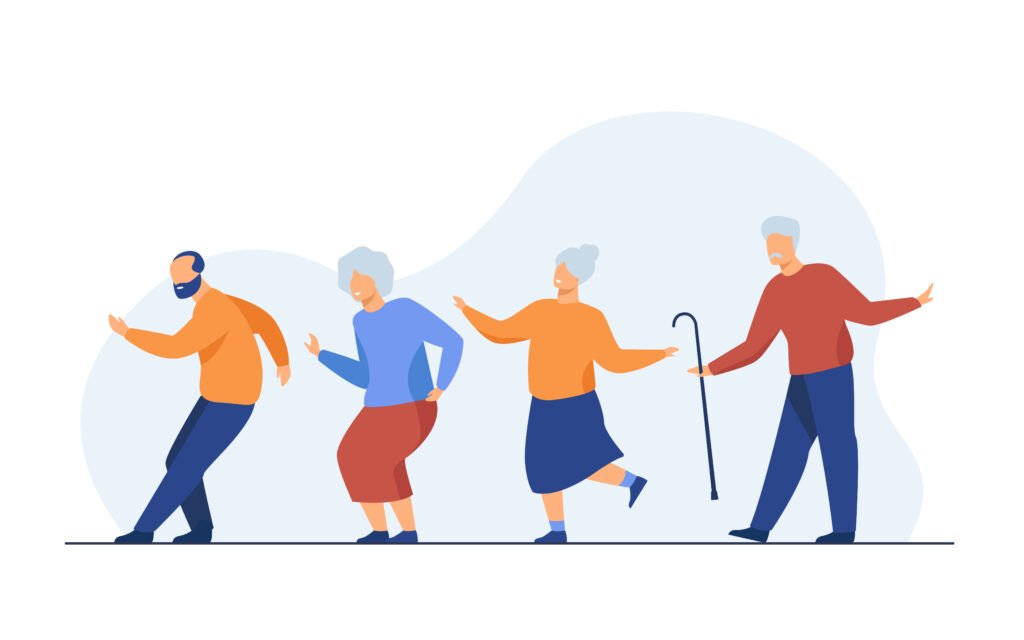
Conclusion
Understanding the age-related changes in motivation and social relationships in old age is essential for health and social care professionals involved in sensitising older adults around the importance of social relationships and a healthy sexuality. By recognising and addressing such changes over the life course, you can support older adults in maintaining positive social connections, fostering emotional well-being, and promoting healthy sexual expression. It is equally important for professionals to recognise the influence of cohort effects on individuals’ sexual attitudes and behaviours. By understanding the historical, social, and cultural contexts that have shaped these attitudes and behaviours, you can provide more tailored and effective care that addresses the specific needs and concerns of older adults from different cohorts. Ongoing research and collaboration between gerontology and healthcare fields can further contribute to the development of effective strategies for enhancing the sexual health and overall quality of life for older adults, taking into account both the inherent changes in old age and the unique influences of cohort effects.
Module 1.2
Health related changes (physical health, medication)

Topic Overview
Sexuality is an important component of emotional and physical intimacy that men and women experience throughout their lives. Age-related physiological changes do not make a meaningful sexual relationship impossible or even necessarily difficult. Many older couples find greater satisfaction in their sex lives than they did when they were younger. They may have fewer distractions, more time and privacy, and no worries about getting pregnant. They also may be better able to express what they want and need, which can offer an opportunity for greater intimacy and connection.
Normal ageing also brings physical changes that can sometimes interfere with the ability to have and enjoy sex. As we age, our bodies change, including our weight, skin, and muscle tone. Some older adults do not feel comfortable in their ageing bodies. They may worry that their partner will no longer find them attractive. Health conditions can cause physical problems, along with stress and worry that can get in the way of intimacy or enjoying a fulfilling sex life. However, many of these physiological changes are modifiable. There are various therapeutic options available to patients to achieve maximum sexual capacity in old ages.
Aims and objectives
After reading this module you should be able to…
- Understand that age-related physiological changes do not necessarily hinder a meaningful sexual relationship, and many older couples find greater satisfaction in their sex lives.
- Recognise the physical changes that can occur with ageing and how they may impact sexual functioning and intimacy.
- Understand the gender specific changes that older women and men may experience.
- Identify the causes of sexual problems in older adults, including illnesses, medications, surgeries, and lifestyle factors, and understand the importance of older people discussing side effects of medications with healthcare providers.
- Recognise the impact of dementia on sexual behaviour and the challenges in managing inappropriate sexual behaviour in individuals with dementia.
- Recognise the need for safe sex practices and the prevention of sexually transmitted diseases in older adults, including the importance of education and communication with healthcare professionals.
- Acknowledge the unique challenges faced by sexual and gender minority (SGM) older adults and the importance of creating inclusive and supportive healthcare environments for this population.
Changes in older women
Menopause may affect sexuality and intimacy in older adults. During a woman’s menopausal transition, which can last for several years and ends with entering into a menopause when a woman has not had a period in 12 months, there may be a variety of symptoms. These can include hot flashes, trouble falling and staying asleep, and mood changes. The desire to have sex may increase or decrease. Menopausal changes that arise from decreased levels of the female sex hormone oestrogen include decreased vaginal lubrication, psycho-sexual changes such as moodiness, irritability, anorgasmia (inability to reach orgasm), decreased libido, and impaired sexual performance (Fritz & Speroff, 2011).
A common change that older women experience is related to the sex organs. With urogenital atrophy, the vagina can shorten and narrow, and the vaginal walls can become thinner and stiffer. For most, there will be less vaginal lubrication, and it may take more time for the vagina to naturally lubricate itself. These changes can make certain types of sexual activity, such as vaginal penetration, painful or less desirable. It may have an effect not only on sexual functioning, but also on emotional well-being, interpersonal relationships, body image and everyday activities such as bike riding or prolonged sitting (Huang et al., 2010). Hormone replacement therapy can reduce these symptoms and women may experience a considerable boost in sexual interest and drive.
Pain with sexual activity can also be caused by problems with the pelvic muscles and tissue, such as urinary incontinence, cystocele (bladder wall bulges into the vagina), rectocele (the rectum wall bulges into the vagina), and vaginal or uterine prolapse (the top of the vagina or uterus sags and falls into the vaginal canal) (Salonia et al., 2004). These disorders are particularly relevant to older women, as they are at increased risk of pelvic floor disorders and, thus, sexual pain disorders, owing to muscular and vascular changes associated with age and childbirth (Walsh & Berman, 2004). These disorders can be treated with surgical procedures.
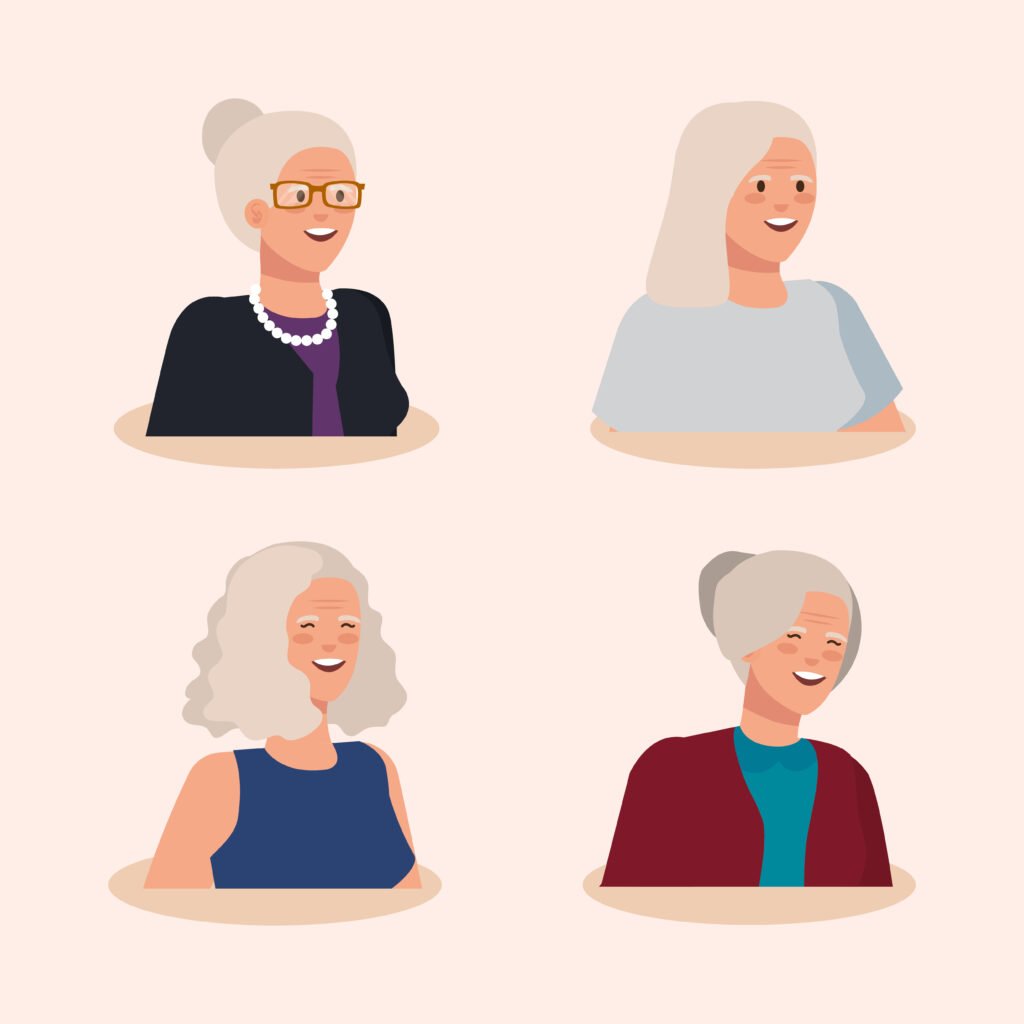
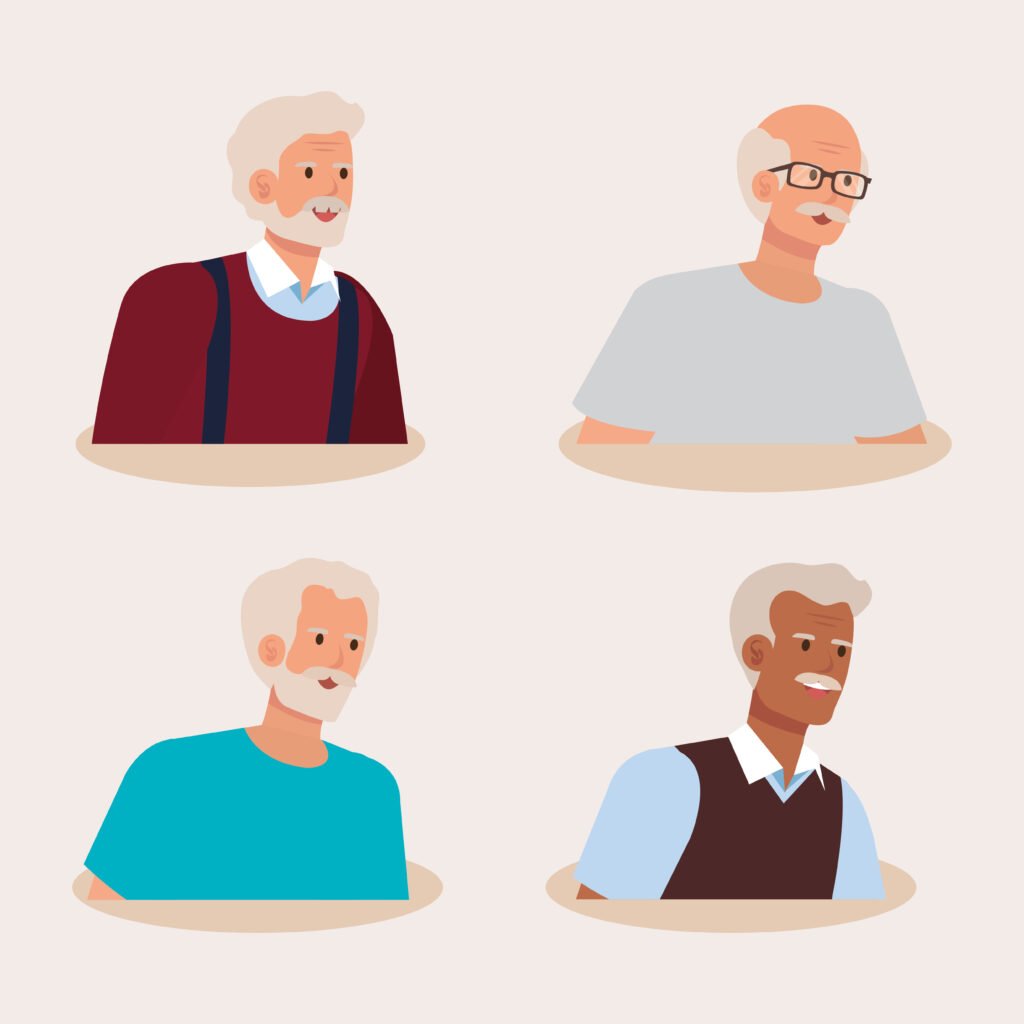
Changes in older men
With age, impotence, also called erectile dysfunction, becomes more common. Erectile dysfunction is the loss of ability to have and keep an erection, and the erection may not be as firm or as large as it used to be (Marais, 2020).Of the causes of male sexual dysfunction, erectile dysfunction and hypogonadism (decreased level of male hormone) are most prevalent, and increase with age (Kandeel et al., 2001). Physiological potency (ability to have an erection sufficient for intercourse most of the time) decreases with age: one study showed a decrease from 97% aged 50–59 to 76% aged 60–69 and 51% aged 70–80 (Matthias et al., 1997). The study’s researchers could not explain this decrease solely by medications or illnesses, suggesting that age may be an independent factor.
In addition, changes in penile structure occur with ageing. The concentration of elastic fibres and collagen decreases with age. In addition, it is estimated that there is a decrease of up to 35% in the smooth muscle content of the penis in men older than 60 years. Mechanical sensitivity of the penis is decreased (Seftel, 2003).These changes may contribute to the development of erectile dysfunction in older men, suggesting that the normal ageing process in the absence of disease may be sufficient to produce erectile dysfunction in at least some men (Lochlainn, 2013).
Some research has reported that the most prevalent sexual problems among men were difficulty in achieving or maintaining an erection (37%), lack of interest in sex (28%), climaxing too quickly (28%), anxiety about performance (27%), and inability to climax (20%) (Lindau et al., 2007). Currently available therapies for erectile dysfunction include oral medication (e.g., sildenafil), penile self-injection therapy, hormone injections, vacuum constriction devices, arterial revascularization, penile prosthesis, and psychological treatment (Lochlainn, 2013; Marais, 2020). It is hoped that further research into gene therapy, as well as the neural, vascular, and molecular mechanisms involved in erection, will lead to development of even safer, more effective, and more convenient therapies for men with erectile dysfunction.
Causes of sexual problems
Although sexual dysfunction increases with age, illness, medication and surgery are more likely to interfere with sexual functioning than ageing alone (Bauer et al., 2007). Physical illness can affect sexual function directly by interfering with endocrine, neural, and vascular processes that mediate the sexual response and indirectly by causing weakness or pain, and psychologically by provoking changes in body image or self-esteem (Choi et al., 2011).
Some illnesses, disabilities, medicines, and surgeries can affect the ability to have and enjoy sex:
Excessive consumption of alcohol can cause erection problems in men and delay orgasm in women.
Joint pain due to arthritis can make sexual contact uncomfortable. Exercise, drugs, and possibly joint replacement surgery may help relieve this pain. Rest, warm baths, and changing the position or timing of sexual activity can be helpful.
Pain can interfere with intimacy. It can also cause tiredness and exhaustion, leaving little energy or interest in sex. Chronic pain does not have to be part of growing older and can often be treated. But, some pain medicines have effects on sexual function, therefore older people should discuss with their doctor the side effects from any medication, and about what could be helpful to avoid them.
Lack of interest in activities you used to enjoy, such as intimacy and sexual activity, can be a symptom of depression. Talking to a doctor about possible treatments that will not further interfere with desire could be a solution.
This is one of the illnesses that can cause erectile dysfunction. In most cases, medical treatment can help. When not well controlled, diabetes can lead to yeast infections, which can cause itching and irritation and make sex uncomfortable or undesirable.
Narrowing and hardening of the arteries can change blood vessels so that blood does not flow freely. For some, it may take longer to become aroused, and it may be difficult to have or maintain an erection. As a result, this can make it difficult to achieve an orgasm. People who have had a heart attack, or their partners, may be afraid that having sex will cause another cardiovascular incident. Even though sexual activity is generally safe, it is advisable to follow medical advice.
Loss of bladder control or leaking of urine is more common as people grow older. Extra pressure on the stomach during sex can cause urine to leak. This can be helped by changing positions or by emptying the bladder before and after sex. In addition, incontinence may be treated with medical treatments, bladder control training, and behavioural and lifestyle changes.
Some drugs can cause side effects that interfere with sex, such as vaginal dryness, erectile dysfunction, difficulty ejaculating, difficulty with arousal and orgasm, and reduced sexual desire. Drugs that can cause these problems include some blood pressure medicines, antihistamines, antidepressants and drugs for other mental health conditions, sedatives, medications for Parkinson’s disease or cancer, appetite suppressants, and anti-ulcer drugs. Older people should discuss with their healthcare provider how changing medications could help to avoid these side effects.
Adults with overweight or obesity have an increased risk of erection problems.
This is a disorder in which scar tissue forms under the skin of the penis and pulls on the surrounding tissues, causing the penis to curve or bend, usually during an erection. Curves in the penis can make erections painful and may make sexual intercourse painful, difficult, or impossible.
The ability to have sex is sometimes affected by a stroke. A change in positions or medical devices may help people with ongoing weakness or paralysis to have sex. Some people with paralysis from the waist down are still able to experience orgasm and pleasure
Any kind of surgery can cause worry, and this can be even more troubling when the breasts or genital areas are involved, such as surgeries for removal of uterus (hysterectomy), breast/s (mastectomy) or prostate (prostatectomy). Most people are able to return to the kind of sex life they enjoyed before surgery. For some, these types of surgeries may even help them to increase their sex life options.
Research has shown that frequency of sexual activity, a good-quality sex life, and interest in sex are positively associated with health in middle age and later life (Lindau & Gavrilova, 2010) with most people in good to excellent health reporting “frequent” sex more than those in fair to poor health (Addis et al., 2006). While modifiable health behaviours, including smoking, alcohol consumption, lack of physical activity, and television viewing time were associated with erectile dysfunction (Bacon et al., 2003.
Dementia
People with some forms of dementia may show an increased interest in sex and physical closeness, but they may not be able to judge what appropriate sexual behaviour is. People with severe dementia may not recognise their spouse or partner but may still desire sexual contact. They may sometimes even seek this with someone else. The prevalence of inappropriate sexual behaviour (ISB) ranges between 2% and 17% of patients with dementia and is more commonly seen in men (Black et al., 2005; Stubbs, 2011). It can be confusing and difficult to know how to handle this situation as differentiation between abnormal and normal sexual behaviours can be challenging. ISB can cause a conflict between respecting a patient’s autonomy and preventing psychological and physical trauma for the patient and others (Black et al., 2005; Kamel & Hajjar, 2003). A thorough medical and sexual history should be obtained before any management strategies are implemented. Strategies to control ISB include behavioural therapy and pharmacological therapy (Black et al., 2005).
If ISBs are due to particular social cues which are misinterpreted, then modification of these cues usually leads to a reduction in inappropriate behaviours. Other non-pharmacological treatments that have been found to be useful in reducing and/or eliminating these behaviours include:
When inappropriate behaviours occur, the older person can benefit from sensitive explanations of why such behaviours are unacceptable. It is helpful to avoid confrontation, as it may cause excessive guilt or shame. At the same time inappropriate behaviours should not be ignored, as this may unwittingly reinforce them. Distraction may be a very useful technique for some of the patients. In nursing homes, single rooms and provision for conjugal or home visits may help reduce the frequency of such behaviours by satisfying the patient’s normal sexual drive. For those patients who are already exhibiting inappropriate behaviours, avoidance of external cues such as overstimulating television or radio programs can be helpful. In patients with a tendency to expose themselves or masturbate in public, trousers that open in the back or that are without zippers may be helpful. For patients in under-stimulating environments, provision for adequate social activity can be helpful. For sexual misinterpretations, providing simple and repeated explanations of why such behaviours are unacceptable is useful.
The care of patients with dementia at home or at a nursing home demands a high degree of technical and interpersonal skills. Caregivers are often caught between moral norms, a person’s rights, and providing appropriate care for their patients. This can lead to confusion, anger, denial, helplessness, and sometimes ambivalence and apathy. Suitable sex-education programmes for family, caregivers, and staff at nursing homes can add to the quality of life of a person with dementia. Supportive psychotherapy might be useful for spouses of older persons who exhibit inappropriate behaviours. They often need reassurance that these behaviours are secondary to the illness and not a reflection of their relationship. It may also be useful to reframe their partner’s sexual requests as calls for closeness and reassurance. The need for normal sexual expression while preventing inappropriate sexual behaviours should be emphasised. Studies have demonstrated that greater knowledge of sexuality and ageing is associated with a more permissive attitude (Black et al., 2005).
Sexually transmitted diseases in older adults
Older people commonly mistakenly believe that they are at a lower risk of contracting sexually transmitted diseases (Goodroad, 2003; Justice et al., 2022), and condom use in casual relationships has been found to be less frequent in older people (Holden et al., 2005). Yet, it has been estimated that older people represent 9– 11% of AIDS cases (Goodroad, 2003), and the prevalence of HIV infection is likely to rise in the ageing population (Emlet et al., 2019). Older people require education regarding safe sex practices, HIV and other sexually transmitted diseases, and health and care professionals can play an important role in this respect (Emlet et al., 2019). Health and care professionals can use the abundance of safe sex education material designed for younger that is available, and adapt this information where necessary for the older population.
Sexual and gender minority older adults
People who identify as part of a sexual and gender minority (SGM) group, such as lesbian, gay, bisexual, transgender, or queer, may experience additional difficulties with sexuality in later life (Brennan-Ing et al., 2021). Years of hiding their identity and other factors can cause stress and fear that may make it difficult for SGM older adults to talk openly with doctors or other health care providers.
For example, studies have found that:
- SGM older adults are more likely than heterosexual older adults to experience certain conditions that could interfere with sex and intimacy, such as increased mental distress and higher rates of various health conditions such as cardiovascular disease, obesity, and disability.
- SGM older adults may be less open about their sexual orientation in assisted living, nursing homes, or other long-term care environments out of fear of being mistreated and discriminated against.
- Many SGM older adults do not disclose their sexual orientation to their health care providers, and some people have reported negative reactions when they do (Chan & Silverio, 2021; Beckie et al., 2022).
Researchers are partnering with people in SGM communities to learn more about the health disparities and other factors affecting these groups. For example, the Ageing with Pride: National Health, ageing, sexuality and gender study, is a long-term effort involving more than 2,000 older adults to better understand the ageing, health, and well-being of SGM populations and their families (Emlet et al., 2019).

Conclusion
This chapter explored health-related changes that can impact sexual functioning and intimacy in older adults. Age-related physiological changes, such as hormonal shifts and alterations in physical structures, can affect sexual health and satisfaction. Women may experience changes related to menopause, including decreased vaginal lubrication and psycho-sexual changes. Men may face challenges with erectile dysfunction and changes in penile structure. Additionally, various health conditions, medications, and surgeries can interfere with sexual function. However, it is important to note that ageing itself does not make a meaningful sexual relationship impossible, and many older people find satisfaction and intimacy in their sex lives. Modifiable therapeutic options, such as hormone replacement therapy and various treatment modalities for sexual dysfunction, are available to enhance sexual capacity in old age. Furthermore, this chapter discussed the unique considerations for dementia patients, the importance of safe sexual practices and education regarding sexually transmitted diseases in older adults, and the specific challenges faced by sexual and gender minority older adults. By addressing these health-related changes and providing appropriate support and education, health and social care professionals can contribute to improving the sexual well-being and quality of life for older adults.
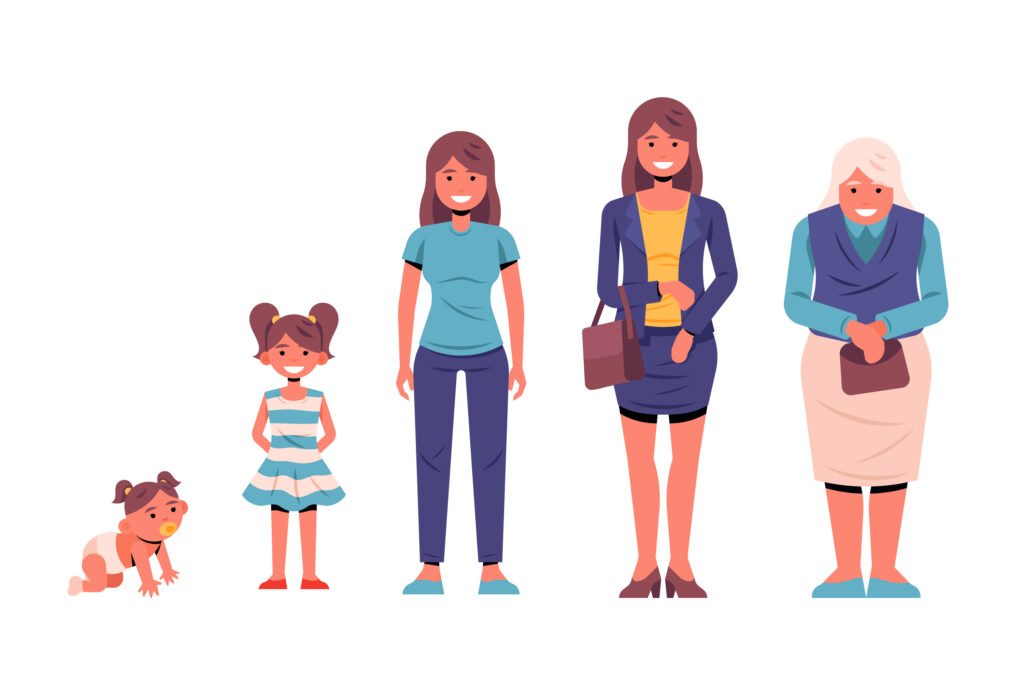
Module 1.3
Views on Ageing and Their Influence on Older People’s Self-Perception and Behaviour
Topic Overview
Views on ageing, i.e. what people think about their own and others’ old age, ageing and older adults as a group, play a significant role in shaping the experiences, self-perception, behaviours and health of older people. This module explores the impact of views on ageing, drawing insights from gerontological research. Understanding the influence of views on ageing is crucial for health and social care professionals to effectively promote healthy sexuality in older ages.
Aims and objectives
After reading this module you should be able to…
- Understand views on ageing and their impact on older individuals’ self-perception and behaviour.
- Differentiate between age stereotypes and self-perceptions of ageing and understand the differences between them.
- Explore the concept of perceptions of ageing as internalised age stereotypes and their effects on self-worth, confidence, and sexual expression in older individuals.
- Understand the potential effects of positive, negative, and differentiated views on ageing on an individual’s own ageing experiences and well-being.
Ageing
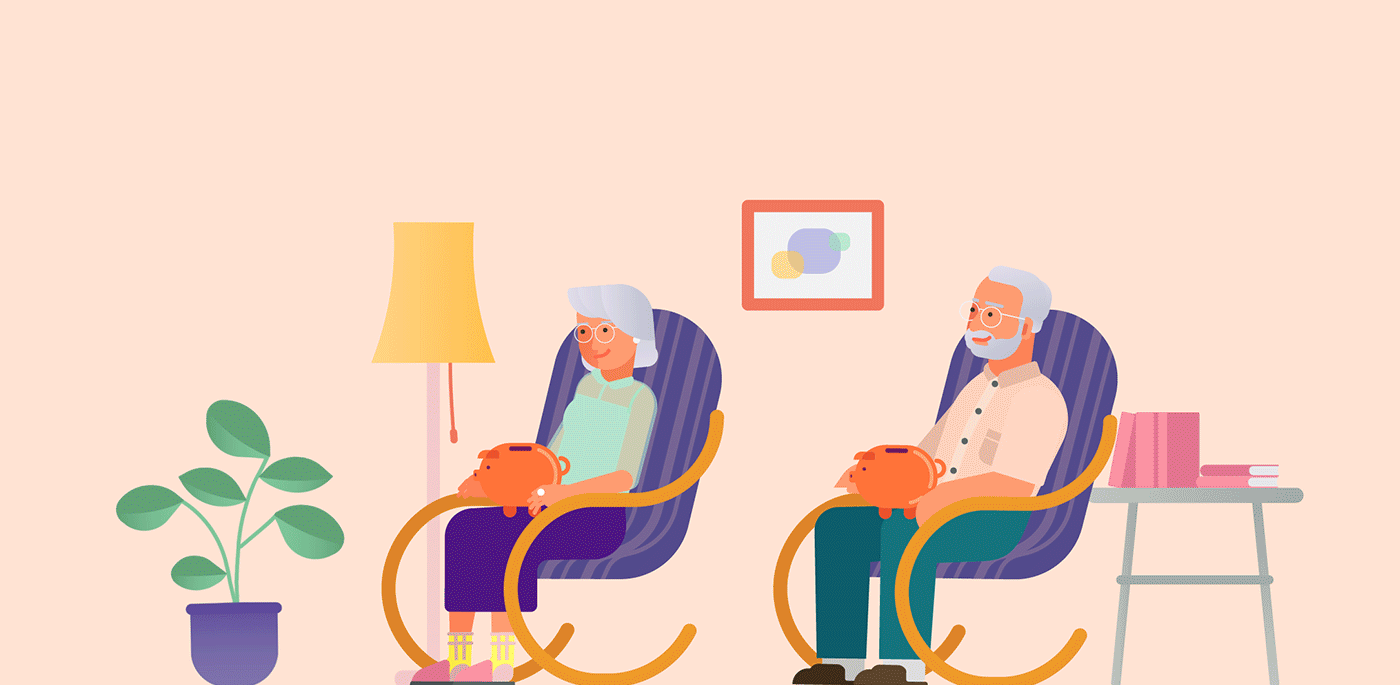
A growing body of research is concerned with understanding what kind of ideas individuals hold about older people, old age and ageing in general and how that affects older people. Such views on ageing can be positive or negative and can vary between different aspects of life. However, Wurm and colleagues (2017) argue that when individuals contemplate the process of aging, whether in relation to themselves or older people in general, they tend to focus more on the aspects of decline and loss rather than on the potential gains and opportunities for personal growth (Heckhausen et al., 1989; Hummert, 2011). These losses may involve physical or psychological changes (such as the development of wrinkles, chronic diseases, or disabilities, and memory decline), changes in personality traits (such as increased rigidity), social losses (such as the death of a spouse or close friends), or behavioural tendencies (such as increased dependence on others). In contrast, gains and growth associated with aging can include increased freedom, patience, dignity, and a sense of maturity or wisdom (Heckhausen et al., 1989).
People have different ideas and expectations about individuals or groups. These so called stereotypes are formed in the course of life through our own experiences, learning by example and knowledge that is formally or informally imparted to us. Certain character traits, values, capabilities and the expected appearance are attributed on the basis of a group characteristic (Rossow, 2012). These kinds of conceptions can be useful in that they help us to navigate social interactions. For example, based on assumptions on their level of understanding, healthcare providers will adapt the complexity of a medical explanation depending on whether they are speaking to a young child, or an adult, or if the person has a medical or non-medical background. In this way, healthcare providers attempt to maximise understanding and deliver the information that is needed for the patient to deal with their situation. However, at times people can be misled by their assumptions – might underestimate the abilities and knowledge of a younger child or non-medical person and such communication might make them feel as if they are not taken seriously.
How views on ageing impact the work of health and social care professionals is the focus of Module 2.1 in Topic 2: Challenges and barriers of Health and Social Care Professionals to sexuality expression in older people.
A distinction is made between the ideas one has about older people as a group (age stereotypes) and those one has about oneself as an older person (self-perceptions of ageing; Rossow, 2012). Self-perceptions of ageing can differ significantly from societal expectations or age-stereotypes. Research has shown that older adults often have more positive self-perceptions of their own ageing compared to their views on others, focusing on their personal wisdom, life experiences, and personal growth (Levy, 2009; Wurm et al., 2017). This can be attributed to the ageing experience itself. Whilst for older people ageing, younger people Whilst for younger people do not actively experience Factors such as self-esteem, resilience, and social support play crucial roles in shaping self-perceptions of ageing (Hummert, 2011; Sarkisian et al., 2002). Older individuals may challenge societal stereotypes by maintaining a strong sense of identity, pursuing meaningful activities, and embracing a proactive approach to their well-being (Lamont et al., 2015; Rowe & Kahn, 2015).
However, not all individuals are immune to negative stereotypes. As highlighted societal views on ageing often portray older individuals in a negative light, emphasising decline, frailty, and dependence on others (Wurm et al., 2017). These stereotypes can be perpetuated through media representations, ageist attitudes, and cultural biases. Accepting and incorporating negative societal beliefs about ageing into one’s self-perception is referred to as internalised ageism. Older individuals may internalise the negative images and stereotypes, leading to a diminished sense of self-worth, decreased confidence, and a reluctance to engage in sexual expression (Levy, 2009).
There have been various findings on how views on ageing can have an effect on the person’s own ageing experiences (Wurm & Huxold, 2012). It has been shown that negative views on ageing, together with self-referential age discrimination or internalised ageism, are dysfunctional. For example, people no longer go to a doctor because of age-related expectations of ineffectiveness, or symptoms that are unjustifiably attributed to age, making proper diagnosis impossible (back pain, “senile depression”). Exaggerated positive images of old age, in turn, can lead to frustration and disappointment if, for example, one cannot live up to one’s own expectations or if physiological changes of old age cannot be accepted (changes in the skin or hair). People who have a differentiated self-referential image of age and who can allow a certain tolerance for individual variance in both directions seem to fare best.
Views on ageing also play a major role in sexuality in old age (Schroeter, 2012). Some people may experience a difference between their needs and desires that they continue to experience as they age and what they perceive is expected of them or what they had been expecting themselves. Negative portrayals in the media, such as the absence of older adults in intimate relationships or the focus on age-related physical and cognitive decline, can contribute to ageist beliefs and influence older individuals’ self-perception and confidence around their sexuality.
Promoting positive images of ageing can empower older individuals by challenging stereotypes and fostering a more inclusive and diverse representation of older people’s sexuality. Highlighting examples of older adults engaging in fulfilling relationships, embracing their sexuality, and challenging ageist beliefs can positively influence self-perception and behaviour.
Health and social care professionals can play a vital role in promoting positive self-perceptions and enhancing older individuals’ sexual well-being. Encouraging open dialogue, providing accurate information about ageing and sexuality, and addressing self-perception concerns can help older adults develop a positive self-image and a healthy approach to their sexuality.
Conclusion
Views on ageing, whether societal or self-perceived, significantly influence older people’s self-perception and behaviour, including their sexuality. Negative stereotypes, ageism, and poor body image can contribute to diminished self-worth and reluctance to express their sexuality. Health and social care professionals can counter these influences by promoting positive views on ageing, challenging stereotypes, and empowering older individuals through education, support, and open communication. By fostering positive self-perception and addressing concerns related to views on ageing, professionals can support older adults in embracing a healthy sexuality and enhancing their overall well-being.

Funded by the European Union. Views and opinions expressed are however those of the author(s) only and do not necessarily reflect those of the European Union or the European Education and Culture Executive Agency (EACEA). Neither the European Union nor EACEA can be held responsible for them.Project Number: 2021-1-FR01-KA220-ADU-000026431


